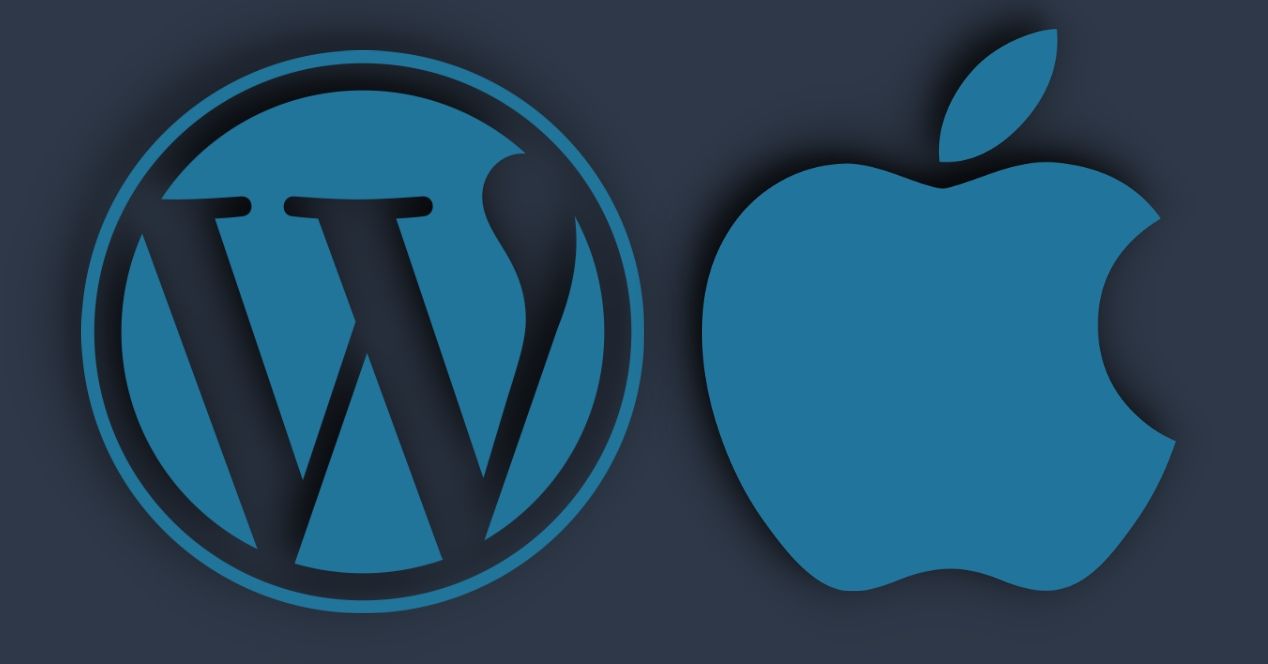Have you ever wondered if Apple might step into the blogging world with a platform integrated with WordPress? With Apple’s knack for creating seamless ecosystems and innovative services, the idea isn’t too far-fetched. Many users love Apple’s simplicity and security, while WordPress remains the go-to for bloggers and content creators worldwide. Combining these could be a game-changer, offering the best of both worlds. In this post, let’s explore whether Apple is likely to launch such a platform and what that could mean for the digital landscape.
Current State of Apple’s Services and Platforms

Apple has built a strong ecosystem centered around its hardware, operating systems, and services. From iPhones and MacBooks to iCloud and Apple Music, the company focuses on creating a seamless user experience that keeps users within its ecosystem. Here’s a quick overview of where Apple currently stands:
- Cloud Services: iCloud offers storage, backups, and syncing across devices, making it easy for users to access their data from any Apple device.
- Content Platforms: Apple Music, Apple TV+, and Apple Podcasts provide streaming and content consumption options, but there’s no dedicated platform for user-generated content like blogs or articles.
- App Store and Developer Tools: Apple’s App Store hosts a vast array of apps, including blogging and content creation tools, but none are specifically tied to a native blogging platform.
- Focus on Privacy and Security: Apple emphasizes user privacy, which shapes how new services are developed and integrated.
While Apple excels in hardware and integrated services, it has yet to make a significant move into the blogging or content management space. Instead, it relies on third-party apps like WordPress, Blogger, and Medium to serve the blogging community. This leaves an open question: Will Apple ever develop its own blogging platform, perhaps even integrated with WordPress? The answer could depend on various factors, including market demand, user needs, and Apple’s strategic priorities.
3. Overview of WordPress and Its Popularity
Let’s start by talking about WordPress—a name that’s practically synonymous with blogging and website creation these days. WordPress is an open-source content management system (CMS), which means it’s free to use, modify, and distribute. It was launched back in 2003, and over the years, it has grown into the most popular platform for building websites, powering about 43% of all websites on the internet.
What makes WordPress so appealing? Well, it’s incredibly user-friendly, even if you’re not a tech expert. You can create a simple blog, a professional business site, or even a full-fledged e-commerce store with the same platform. Its vast ecosystem of themes and plugins means you can customize your site’s look and functionality without needing to code from scratch.
Another reason for its widespread popularity is the strong community behind it. From developers and designers to bloggers and small business owners, millions of users contribute tutorials, themes, and plugins, making WordPress a constantly evolving platform. Plus, its SEO-friendly features help your content rank better on search engines, giving bloggers and website owners a real edge.
In short, WordPress has become the go-to platform for anyone looking to publish online—whether you’re sharing personal stories, showcasing a portfolio, or running a business. Its flexibility, ease of use, and large community make it an unbeatable choice for content creators around the world.
4. Potential Benefits of an Apple and WordPress Integration
Now, imagine if Apple decided to team up with WordPress to create a seamless blogging experience—sounds exciting, right? Such an integration could bring some serious benefits to both Apple fans and the broader blogging community. Let’s break down what those benefits could look like:
- Streamlined User Experience: Apple is known for its sleek, intuitive interfaces. Combining this with WordPress’s powerful blogging tools could produce a clean, easy-to-navigate platform that appeals to both beginners and pros alike.
- Enhanced Mobile Ecosystem: With Apple’s focus on mobile devices—iPhones, iPads, and the Apple Watch—a native integration could make publishing, editing, and managing blogs directly from Apple devices super smooth. Imagine writing a post on your iPad and instantly publishing it with a tap.
- Better Content Management: An Apple-WordPress combo could leverage Apple’s ecosystem (like iCloud syncing) to keep your content consistent across all devices. This could mean seamless access to your drafts, media, and settings no matter where you are.
- Innovative Features: Apple’s hardware and software expertise could introduce new features—think voice dictation with Siri, augmented reality previews, or even AI-powered content suggestions—to enhance your blogging experience.
- Increased Exposure and Accessibility: Apple’s global reach could help bring WordPress-powered blogs to a broader audience, especially through integrations with Apple News or Podcasts, expanding content consumption and engagement.
All in all, a partnership between Apple and WordPress could mean a more polished, integrated, and user-friendly blogging environment. It could remove many technical barriers, making it easier for anyone with an Apple device to start, manage, and share their stories online. While it’s just speculation for now, the potential is definitely there for a game-changing platform that combines Apple’s design excellence with WordPress’s robust publishing capabilities.
5. Challenges and Limitations of Launching a New Blogging Platform by Apple
Thinking about Apple stepping into the blogging world is exciting, but it’s not without its hurdles. There are several challenges that Apple would need to overcome to successfully launch and sustain a new blogging platform integrated with WordPress or any other system.
First off, market saturation is a big issue. The blogging space is already crowded with giants like WordPress, Blogger, Medium, and others. Introducing a new platform means Apple needs to offer something truly unique to stand out. Without a compelling value proposition, users might stick with what they already know.
Another challenge is user adoption. While Apple has a loyal customer base, convincing non-Apple users to migrate or adopt a new platform involves significant effort. Plus, many bloggers prefer platforms that are open and flexible, and Apple’s often-closed ecosystem might be seen as a limitation rather than an advantage.
Technical integration is also complex. Apple would need to build a seamless integration with WordPress, which is open-source and highly customizable. Ensuring compatibility, security, and a smooth user experience across different devices and operating systems would require substantial development resources.
Content migration and data portability pose another hurdle. Existing bloggers have years of content on platforms like WordPress. Apple would need to facilitate easy migration tools, or risk alienating potential users who don’t want to start from scratch.
Additionally, monetization and revenue sharing models need careful planning. Bloggers want to earn revenue, and Apple would need to decide how to handle advertising, subscriptions, and payments. If the platform’s policies seem too restrictive or less lucrative, it might deter quality content creators.
Finally, privacy and regulation concerns are always front and center for Apple. Ensuring compliance with global data laws, protecting user privacy, and managing moderation policies would be critical, especially since Apple emphasizes privacy as a core value.
In short, launching a successful blogging platform isn’t just about building a pretty interface; it’s about navigating a complex web of technical, competitive, and regulatory challenges. Apple’s entry would require strategic planning, innovation, and a clear understanding of what the modern blogger truly needs.
6. Possible Scenarios for Apple’s Entry into Blogging Platforms
So, what could Apple’s move into the blogging scene look like? While it’s speculative, we can explore some interesting scenarios based on Apple’s history, ecosystem, and current trends.
Scenario 1: A Seamless Integration with Existing Apple Ecosystem
Imagine Apple launching a blogging platform tightly integrated with iCloud, Apple Photos, and Apple Music. This could allow users to easily embed photos, videos, and music into their blogs, creating rich, multimedia content with just a few taps. The platform could be accessible via Safari and iOS apps, offering a consistent experience across devices.
Scenario 2: A Premium, Ad-Free Experience Focused on Privacy
Given Apple’s emphasis on privacy, the platform might prioritize user data protection, offering an ad-free environment with subscription-based monetization. Bloggers could share their stories without worrying about targeted ads or data collection, appealing to privacy-conscious creators.
Scenario 3: A Complement to Apple News or Apple Podcasts
Apple could develop a blogging platform that acts as an extension of its news or podcast services. Creators could publish articles or post updates directly into Apple’s curated content ecosystem, reaching audiences already engaged with Apple’s media offerings. This would foster a kind of “native” blogging experience within Apple’s content universe.
Scenario 4: A Collaboration with WordPress or Other Open-Source Platforms
Rather than building from scratch, Apple might partner with existing platforms like WordPress to create a customized, Apple-branded experience. This could involve launching an app or service that syncs with WordPress sites, allowing users to manage their blogs within Apple’s ecosystem while leveraging WordPress’s flexibility.
Scenario 5: A Niche Platform for Creators and Influencers
Apple could target a specific niche—like artists, musicians, or tech enthusiasts—offering tailored tools for content creation, analytics, and monetization. This specialized approach would differentiate Apple’s platform and cater to communities that already align with Apple’s brand values.
While these scenarios vary in scope and approach, they all share a common theme: leveraging Apple’s strengths—design, privacy, ecosystem integration—to create a compelling blogging experience. Whether as a standalone platform or an extension of existing services, Apple’s entry could reshape how content creators share their stories in the digital age.
7. Impact on Users and Content Creators
Imagine a world where Apple steps into the blogging arena by integrating with WordPress — it could really shake things up for both users and content creators. For users, one of the biggest perks might be how seamless the experience becomes. Apple’s reputation for sleek, user-friendly interfaces could mean an intuitive platform that makes creating, managing, and consuming content easier than ever.
Content creators, especially bloggers and small business owners, could benefit from the combined power of WordPress’s flexible content management system and Apple’s ecosystem. Think about the possibilities: you could write your posts on an iPad or Mac, use iCloud for effortless syncing, and publish directly to a beautifully designed platform optimized for all Apple devices. That kind of integration could save time and reduce headaches, making content creation more enjoyable.
Another significant impact could be on monetization and analytics. WordPress already offers a ton of plugins for SEO, advertising, and analytics — and if Apple integrates these features tightly into their platform, creators might find it easier to grow their audience and earn revenue. Plus, with Apple’s focus on privacy, users might feel more secure knowing their data is protected while engaging with content.
However, there are potential challenges too. For example, existing WordPress users might worry about losing flexibility or control over their sites if Apple’s platform becomes a closed ecosystem. On the flip side, casual bloggers or new users might find the Apple-WordPress combo appealing because of the reputation for quality and simplicity.
Overall, this move could democratize content creation, making blogging more accessible and enjoyable for everyone, regardless of their technical skills. It’s an exciting prospect that could reshape how we think about publishing and consuming content on Apple devices.
8. Conclusion and Future Outlook
So, will Apple ever launch a blogging platform integrated with WordPress? While there’s no official confirmation yet, the idea isn’t too far-fetched. Apple has a history of entering markets strategically, and with the popularity of content creation and the growing demand for seamless digital experiences, it makes sense that they’d want a piece of the blogging pie.
If they did, it could bring a fresh perspective to the blogging world — blending the power and flexibility of WordPress with Apple’s signature focus on design, security, and user experience. For content creators and users alike, this could mean a more integrated, secure, and enjoyable way to publish and engage with content.
Looking ahead, several factors could influence whether this vision becomes reality:
- Market demand: As creators seek easier ways to publish and monetize content, Apple might see this as a valuable opportunity.
- Technical feasibility: Apple’s expertise in hardware and software could facilitate a smooth integration with WordPress’s platform.
- Strategic partnerships: Collaborations with WordPress developers or other content platforms could accelerate development.
- Privacy and security: Apple’s commitment to privacy might set new standards for online content management and consumption.
In conclusion, while we’re still waiting for official news, the possibility of Apple launching a blogging platform integrated with WordPress is an exciting idea that could benefit millions of users worldwide. As technology continues to evolve, it’s fun to imagine how this fusion could redefine the future of content creation and sharing. Keep an eye out — the landscape of digital publishing might just be on the cusp of a major transformation!


